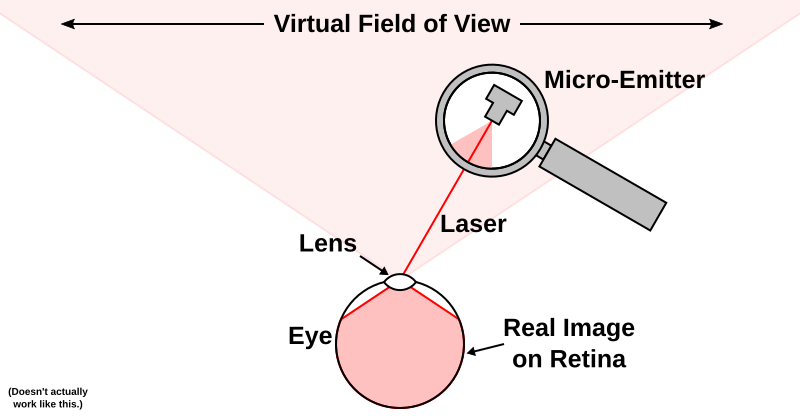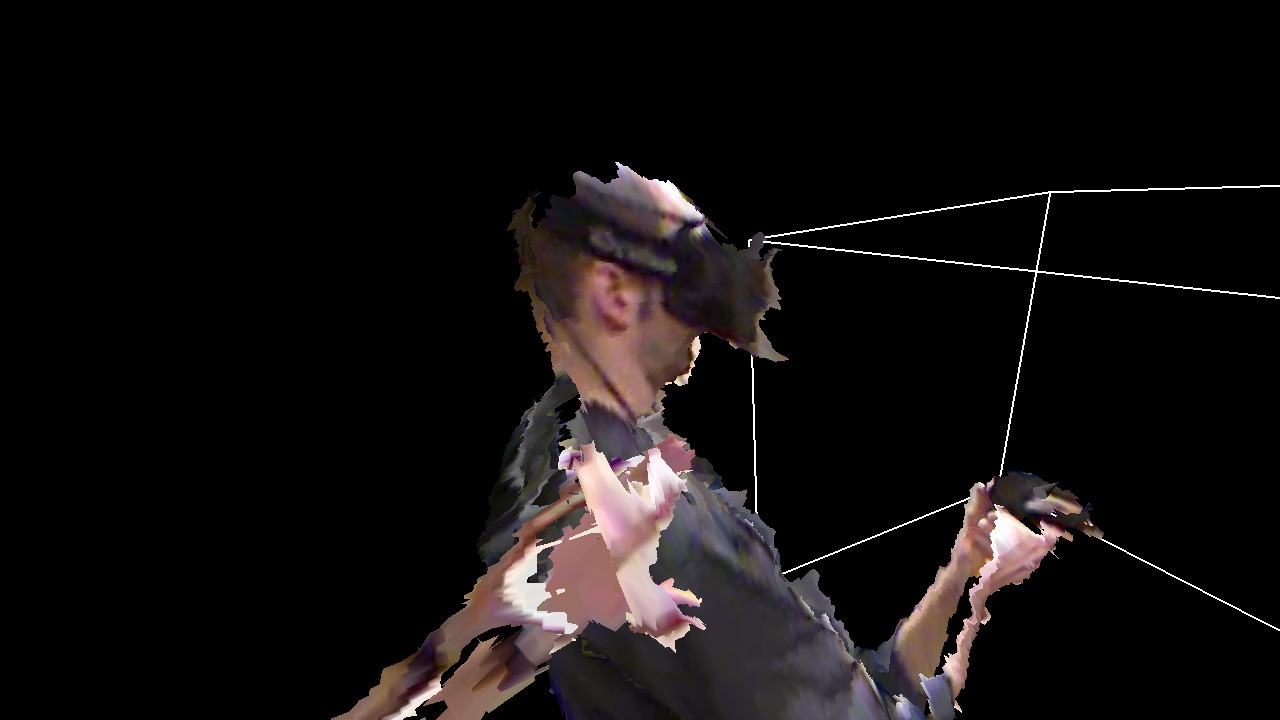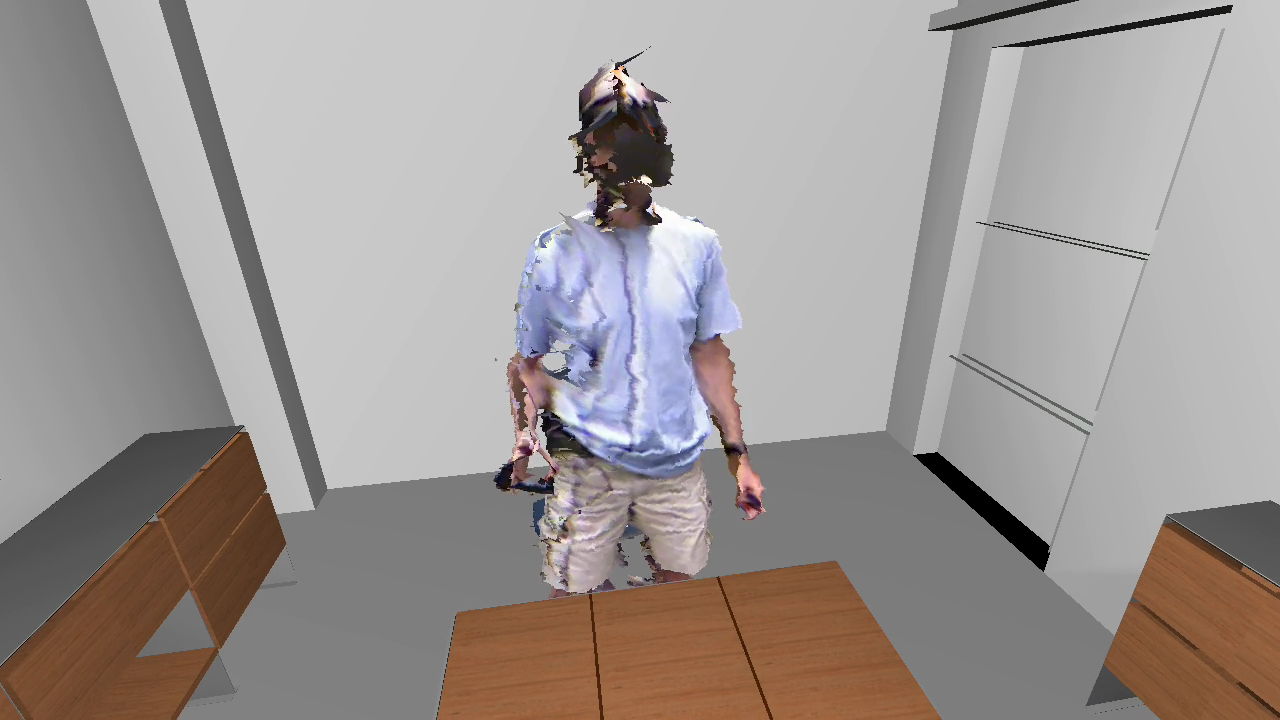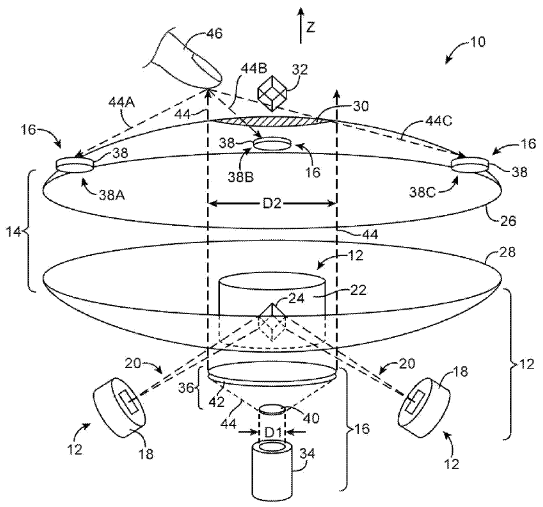Here is an update on my quest to stay on top of all things “holo:” HoloLamp and RealView “Live Holography.” While the two have really nothing to do with each other, both claim the “holo” label with varying degrees of legitimacy, and happened to pop up recently.
HoloLamp
At its core, HoloLamp is a projection mapping system somewhat similar to the AR Sandbox, i.e., a combination of a set of cameras scanning a projection surface and a viewer’s face, and a projector drawing a perspective-correct image, from the viewer’s point of view, onto said projection surface. The point of HoloLamp is to project images of virtual 3D objects onto arbitrary surfaces, to achieve effects like the Millenium Falcon’s holographic chess board in Star Wars: A New Hope. Let’s see how it works, and how it falls short of this goal.
Creating convincing virtual three-dimensional objects via projection is a core technology of virtual reality, specifically the technology that is driving CAVEs and other screen-based VR displays. To create this illusion, a display system needs to know two things: the exact position of the projection surface in 3D space, and the position of the viewer’s eyes in the same 3D space. Together, these two provide just the information needed to set up the correct perspective projection. In CAVEs et al., the position of the screen(s) is fixed and precisely measured during installation, and the viewer’s eye positions are provided via real-time head tracking.
As one goal of HoloLamp is portability, it cannot rely on pre-installation and manual calibration. Instead, HoloLamp scans and creates a 3D model of the projection surface when turned on (or asked to do so, I guess). It does this by projecting a sequence of patterns, and observing the perspective distortion of those patterns with a camera looking in the projection direction. This is a solid and well-known technology called structured-light 3D scanning, and can be seen in action at the beginning of this HoloLamp video clip. To extract eye positions, HoloLamp uses an additional set of cameras looking upwards to identify and track the viewer’s face, probably using off-the-shelf face tracking algorithms such as the Viola-Jones filter. Based on that, the software can project 3D objects using one or more projection matrices, depending on whether the projection surface is planar or not. The result looks very convincing when shot through a regular video camera:








